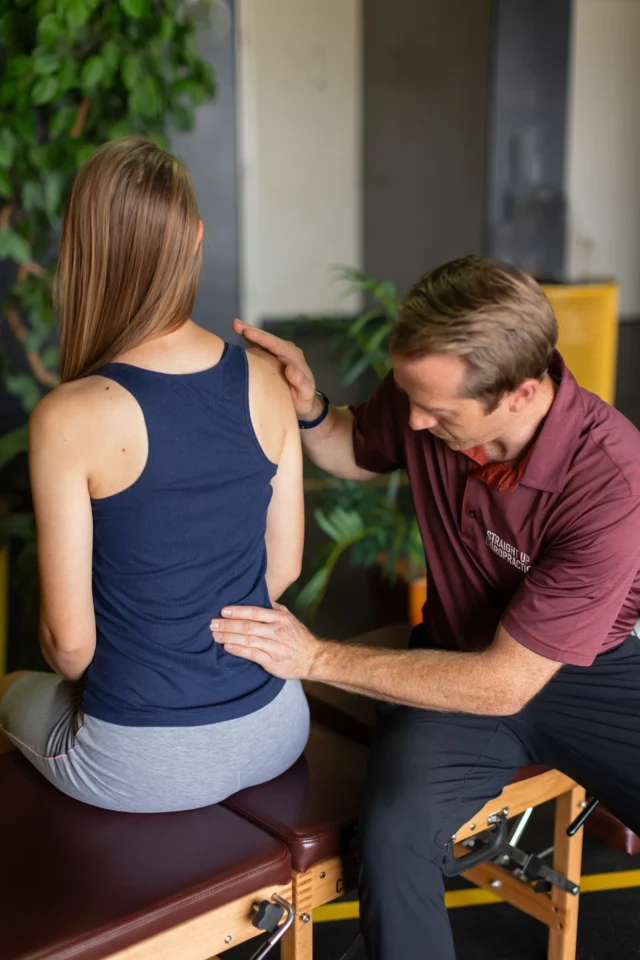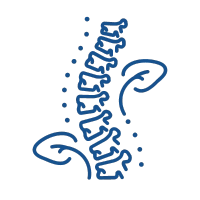Knee pain can be a frustrating obstacle, stopping you from enjoying the activities you love. For many athletes and active individuals, this pain often stems from two common conditions: patellar tendonitis, also known as jumper’s knee, and IT band syndrome. Both can be debilitating, but understanding their causes and effective treatment options is the first step toward getting back on your feet.
This guide will explain the differences between jumper’s knee and IT band syndrome, their common causes, and their symptoms. More importantly, it will explore how a specialized chiropractic approach can provide lasting relief by addressing the root cause of the problem, not just the symptoms. If you’re tired of knee pain holding you back, it’s time to discover a path to recovery.
Understanding Patellar Tendonitis (Jumper’s Knee)
Patellar tendonitis, or “jumper’s knee,” is an overuse injury affecting the patellar tendon, which connects your kneecap (patella) to your shinbone. This tendon plays a crucial role in straightening your leg, allowing you to kick, run, and jump.
Causes of Jumper’s Knee
This condition is most common in athletes whose sports involve frequent jumping, such as basketball, volleyball, and track and field. The repetitive stress on the patellar tendon leads to tiny tears that cause inflammation and pain. Key contributing factors include:
- Overuse: Suddenly increasing the intensity or frequency of physical activity.
- Improper Form: Poor technique during exercises can place extra strain on the tendon.
- Tight Leg Muscles: Tight quadriceps and hamstrings can increase the pull on the patellar tendon.
- Muscle Imbalances: When some leg muscles are stronger than others, it can create uneven forces across the tendon.
Symptoms of Jumper’s Knee
The primary symptom is pain located between your kneecap and where the tendon attaches to your shinbone. Initially, you might only feel pain during or after physical activity. As the condition worsens, the pain can become constant and interfere with daily movements like climbing stairs or even just standing up.
Understanding IT Band Syndrome
Iliotibial (IT) band syndrome occurs when the IT band—a long piece of connective tissue that runs along the outside of your thigh from your hip to your shin—becomes tight or inflamed. This band helps stabilize your knee during activities like running and cycling.
Causes of IT Band Syndrome
When the IT band is irritated, it can create friction on the outside of the knee, leading to pain. This is often caused by:
- Repetitive Motion: Long-distance running, cycling, or other activities involving repeated knee bending.
- Muscle Imbalances: Weak hip abductor muscles can cause the IT band to tighten.
- Poor Biomechanics: Issues like improper foot strike, leg-length discrepancy, or poor form can contribute to irritation.
- Inadequate Warm-Up or Stretching: Failing to properly prepare the muscles for activity can lead to tightness.
Symptoms of IT Band Syndrome
The most common symptom is a sharp or burning pain on the outer side of the knee. The pain often worsens with continued activity and may be accompanied by swelling or a clicking sensation. It’s typically most intense when the knee is slightly bent.
A Different Approach to Knee Pain
While rest and ice can provide temporary relief, they often don’t address the underlying issues causing the pain. At Straight Up Chiropractic in St. George, UT, Dr. Gavin Hall takes a different approach. The clinic’s philosophy is centered on identifying and correcting the root causes of pain to promote long-term healing and prevent future injuries.
What sets Straight Up Chiropractic apart are the specialized techniques used, which are unique to Southern Utah. Dr. Hall is one of only two practitioners in the region trained in Advanced Muscle Integration Technique (AMIT) and the only chiropractor certified in Neural Pathway Integration (NPI). These cutting-edge methods are designed to assess and treat muscle imbalances and neurological inhibitions that are often the true source of chronic pain.
How Chiropractic Treatment Can Help
Chiropractic care for knee pain goes beyond just treating the immediate area of discomfort. It involves a comprehensive, full-body approach to restore proper function and alignment.
Full-Body and Extremity Adjustments
At Straight Up Chiropractic, treatment isn’t limited to the spine. Dr. Hall performs full-body and extremity adjustments, addressing every joint from your ankles to your jaw. For knee issues, this means ensuring the hips, ankles, and feet are all functioning correctly, as misalignment in these areas can directly contribute to knee pain. By restoring proper joint mechanics, adjustments can relieve stress on the tendons and muscles surrounding the knee.
AMIT and NPI Techniques
The AMIT method focuses on identifying muscles that have become “shut off” or inhibited due to injury or overuse. By reactivating these muscles, Dr. Hall restores stability and function to the joint, which is crucial for treating both patellar tendonitis and IT band syndrome. NPI works to correct faulty nerve signals between the brain and the body, ensuring that your muscles fire correctly and efficiently.
Personalized Treatment Plans
Every patient is unique, and so is their pain. Dr. Hall creates customized treatment plans tailored to your specific condition, activity level, and health goals. This personalized care ensures that you receive the most effective treatment for your needs, leading to faster recovery and lasting results. Patients consistently report that Dr. Hall takes the time to listen and is committed to helping them regain wellness, not just providing a temporary fix.
Preventing Knee Injuries
Once you’re on the path to recovery, prevention is key. Here are some tips to help prevent jumper’s knee and IT band syndrome from recurring:
- Warm-Up Properly: Always start your workouts with dynamic stretching to prepare your muscles for activity.
- Stretch Regularly: Focus on stretching your quadriceps, hamstrings, and hip flexors to maintain flexibility.
- Strengthen Your Muscles: Incorporate exercises that target hip abductors and glutes to improve stability.
- Focus on Form: Pay attention to your technique during exercise to avoid unnecessary strain on your knees.
- Listen to Your Body: Don’t push through pain. Give your body adequate time to rest and recover between workouts.
Take Control of Your Health
Living with knee pain from patellar tendonitis or IT band syndrome doesn’t have to be your reality. By addressing the root cause of the issue through specialized chiropractic care, you can achieve lasting relief and return to an active, pain-free life. The comprehensive, full-body approach offered at Straight Up Chiropractic ensures that your entire system is functioning optimally, reducing the risk of future injuries.
If you’re in the St. George, UT, area and are ready to move beyond temporary fixes, it’s time to seek professional care. Schedule an appointment with Dr. Gavin Hall at Straight Up Chiropractic and take the first step toward true healing and holistic wellness.



